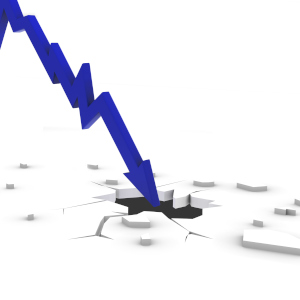Investors warned about looming price declines
House price growth is set to decline significantly in 2016, with the possibility of entering negative territory beyond that, according to new market forecasts.

Slowing population growth, reduced investor demand and perceptions of unaffordability are set to weigh down on house price growth this year, with Sydney and Melbourne to bear the brunt of reduced market activity, according to new forecasts from Fitch Ratings and AMP Capital chief economist Shane Oliver.
In an interview with Smart Property Investment’s sister publication Mortgage Business, Mr Oliver warned that the Sydney property market has become so stretched that prices are likely to fall next year as the market enters a downward cycle.
“I think because the property market has become so stretched, particularly in Sydney, it has been enough to tip the cycle back down again,” Mr Oliver said. “This year we will see weak price growth and then next year we might actually see price declines.”
Mr Oliver’s comments come as credit agency Fitch Ratings this week forecast that Australian house price growth in 2016 would sit at two per cent, down from the four per cent forecast issued for 2015.
According to Fitch Ratings Australia managing director Ben McCarthy, the slowdown can be attributed to reduced demand in Sydney and Melbourne as population growth declines and the market "reaches limits of affordability and investor demand and interest recedes".
"Lower population growth, which has reached a decade low of 1.35 per cent, coupled with better building activity should lead to a better balance in supply and demand and put less upward pressure on prices," Mr McCarthy said in comments appearing in the Australian Financial Review.
Although Fitch Ratings is not predicting major correction in house prices, Mr Oliver believes that the Sydney market is set to enter a slowdown phase mirroring past performances, with the distinct possibility of price growth entering negative territory.
“I think it is another cycle similar to those we have seen in the last few years,” Mr Oliver said.
“If you look at Sydney, it had a slowdown in 2005 where prices fell between 5 and 10 per cent in certain areas, then we had an upswing into the run up to GFC, then we had a downswing both in Sydney and Melbourne in 2008,” he said.
“Prices fell in 2009 then we saw an upswing in 2010 into early 2011, then another downswing into the 2012 period and recently an upswing. So we have been seeing these cycles go up and down now for the last decade, starting in Sydney but also in Melbourne. I think we will see another one of them.”
Mr Oliver noted that the out-of-cycle rate hikes of the banks towards the end of 2015 have dampened sentiment and dramatically shifted expectations.
“One of the reasons that investors have backed right off is that sentiment regarding expectations for home prices has completely reversed,” he said. “It has gone from ‘we’ve got to get in now otherwise we’ll miss out and prices are up 15 per cent per annum and that will continue’ to a fundamentally dented, more cautious sentiment.”
APRA’s lending curbs became more pronounced through July and August last year when lenders started adjusting their mortgage rates and LVR requirements.
Consequently, auction clearance rates started to fall and house price growth slowed towards the end of 2015.
“It’s almost as if someone has slammed the breaks on, particularly in Melbourne and Sydney,” Mr Oliver said.
“However, as the property market cools down in Sydney and Melbourne it does provide some scope for first home buyers to get into the market.”
Read more:
Hey big spender!
Potential default crisis in 2016
How to pick a hotspot; Here comes the squeeze!
Property versus shares debate back in the spotlight
What property investors need to know about credit scores